BeoVision 700
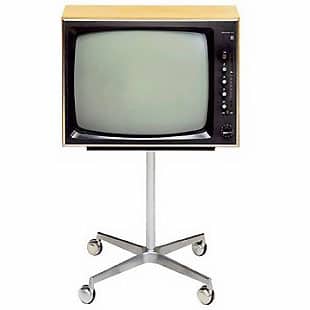
Beovision 700 won the iF Design Award in 1966

Beovision 700 won the iF Design Award in 1966
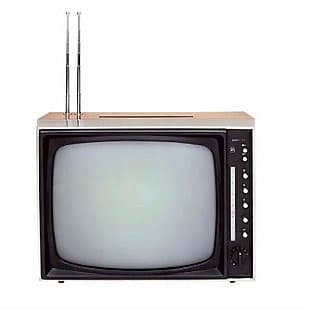
Beovision 400 was a transportable television designed in 1965 by the young David Lewis and Henning Moldenhawer while working under the direction of Jacob Jensen.
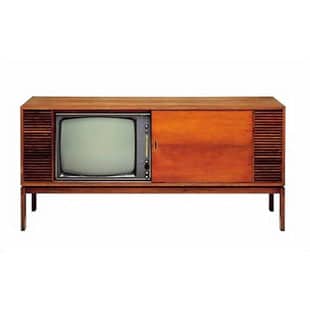
In 1965 came true combination of craftsmanship and advanced technology: Beovision 2000RG was a combined TV and radiogram. It had a sliding door to cover the monochrome TV screen when it was not being use and had stereo speakers mounted either side.
The optional tape recorder was available in two versions – Mono and Stereo.
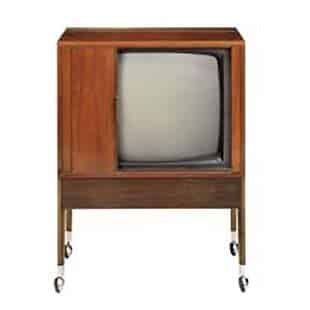
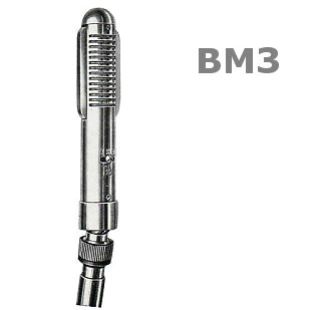
Bang & Olufsen Beomic 3 (150 ohms) and Beomic 4 (multi- impedance) models were pressure-gradient full-bass microphones with a perfect figure-eight directional pattern.
Features: No resonance peaks. Extremely smooth response. Bi-Directional – no side pickup. No frequency discrimination, front to back. High efficiency Nu-Metal transformer placed in microphone housing. Switch for muting and voice/music conditions. The miniature non-corrosive duraluminium ribbon was only 0.0001″ thick and its weight only 1.3 mg. This negligible mass prevented any resonance within the audio range. Shock and blast proof. Ball swivel for tilting to any position.
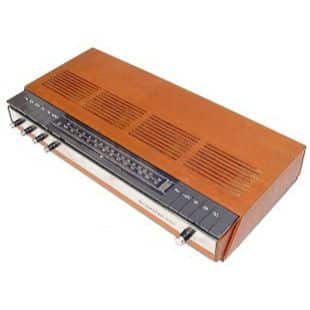
Beomaster 1000 – a compact all-transistor hi-fi 2 x 15 watt stereo amplifier equipped with a highly selective FL radio with extended FM band (to 108 MHz), 3-gang tuning capacitor and 4-stage intermediate-frequency amplifier, automatic control circuit which locks on FM stations and keeps them accurately tuned.
It is prepared for single-transmitter stereo broadcasts, having a B&O multiplex adaptor (stereo decoder); it is also equipped with a pilot lamp (“Beo-Beacon”) which lights up when the receiver is tuned to a station transmitting an FM stereo programme.
The stereo amplifier, which plays both stereo and mono gramophone records, delivers no less than 2 x 15 watts of power output; piano-key speaker change-over switches which control two sets of stereo speaker systems, separate extra-efficient bass and treble controls; balance control for correct stereo sound distribution; physiologically compensated volume control (provides full balance at all volume levels throughout the tonal range); separate scratch and rumble filters; piano-key switching between mono and stereo reproduction; piano-key selectors for switching between the following types of operation: FM Broadcasting, FM Automatic Frequency Control; Tape Recorder; Gramophone 1; Gramophone 2.
Dimensions: 87mm high, 505mm wide, 24mm deep.
Choice of teak or Brazilian rosewood finish. Awarded the 1966 iF Prize for Industrial Design”
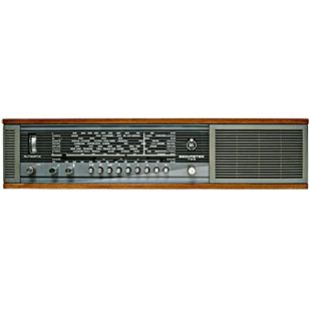
This was a version of the Beomaster 900 with a single speaker attached to it. Rarely seen in the UK.
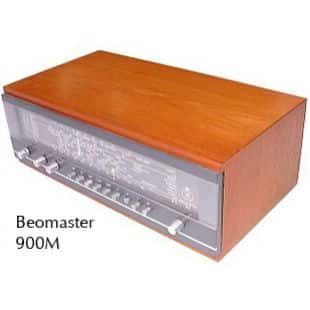
The inspiration for the Beomaster 900 came from the brains of Henning Moldenhawer.
The first product of the new era was launched in 1964.
Beomaster 900 was a fully transistorised radio with FM stereo radio. It was even launched in a version with two built-in speakers – Beomaster 900K – making it clear to everyone that it contained two independent stereo loudspeakers. Bang & Olufsen wanted to design a product so unique that it would open the doors to distribution throughout Europe, in the same way as the “Five Lamper” had done in Denmark 30 years earlier .
Beomaster 900M
This version of the Beomaster 900 was developed specially for those who require a set for use with external speakers. Otherwise, the Beomaster 900M is identical with the Beomaster 900K. Dimensions: 146mm high, 404mm wide, 230mm deep. Choice of teak or Brazilian rosewood finish.” – taken form the Bang & Olufsen product catalogue 1967 – 68
The most remarkable aspect, however, was not in the technology, but in the design. Transistors, which are small compared to radio tubes, generate less heat. As they require less space to release heat, transistors allow for radically different cabinet designs. The architect and designer, Henning Moldenhawer, knew how to exploit this. He designed the world’s first low, flat radio cabinet, creating a radical innovation in the process. From practically one day to the next, the good old tube equipped radio had become obsolete. Now it was transistors, not tubes, which for the first time would be powered from the mains. While the sound was improved, the loudspeakers also underwent significant changes, becoming more compact. After all, in those days, loudspeakers were foreign elements in the living-room. This was achieved with the pressure chamber loud speaker which reproduced sound of a quality which had, until then, only been possible with far bigger boxes. A long, low and fully transistorised mains radio, which played immediately – with no warm-up necessary, as was the case with the radio tubes – was an achievement in itself. In addition, the design concept challenged all established ideas for radio design. The new Beomaster 900 marked a revolution. It was the architect Henning Moldenhawer who, for the first time in the history of radio, extended the front all the way out to the sides of the unit, breaking with the traditional framing of the front which all radios, TVs and loudspeakers had been using until then. This motif was retraced in Bang & Olufsen’s future design language. It was even repeated graphically in the company’s advertisements. Beomaster 900 became a European-wide success. At the same time – and much to the company’s surprise – its share of the Danish market did not fall. On the contrary, it rose significantly – at a time when the last of the remaining Danish manufacturers went to the wall. Proof indeed that design is not only for connoisseurs, but is a universal language, at least when applied with talent and as an expression of the product’s conceptual content, i.e. making the product itself a communicator. When, some years later, Bang & Olufsen explained its identity, this visually self-communicating aspect was dubbed ‘Autovisuality’. Concept communication in terms of what the unit is and can do, communication between the unit and the user, but also identity communication between those who create the products and those who select and acquire them as well as between those who own the products. ” Beomaster 900K: This all-transistor mains-powered stereo radio will revolutionise your ideas about radio and was awarded the iF prize at the International Hanover Fair. The Beomaster 900K is an all-transistor mains-powered stereo radio featuring a specially engineered highly-efficient dual-channel audio amplifier for reproduction of stereo gramophone records (delivers 2 x 5 watts of undistorted power output). It is prepared for single transmitter stereo broadcasts, having a B&O multiplex adaptor (stereo decoder). A Beo-Beacon pilot lamp lights up when the receiver is tuned to a station transmitting an FM stereo programme or when the receiver is switched to play stereo gramophone records or stereo tapes. The Beomaster 900K has two B&O pressure-chamber speakers. Dimensions: 146mm high, 744mm wide, 230mm deep)
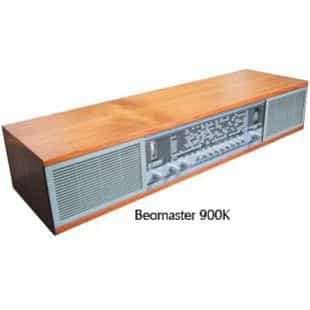
The inspiration for the Beomaster 900 came from the brains of Henning Moldenhawer.
The first product of the new era was launched in 1964.
Beomaster 900 was a fully transistorised radio with FM stereo radio. It was even launched in a version with two built-in speakers – Beomaster 900K – making it clear to everyone that it contained two independent stereo loudspeakers. Bang & Olufsen wanted to design a product so unique that it would open the doors to distribution throughout Europe, in the same way as the “Five Lamper” had done in Denmark 30 years earlier .
Beomaster 900M
This version of the Beomaster 900 was developed specially for those who require a set for use with external speakers. Otherwise, the Beomaster 900M is identical with the Beomaster 900K. Dimensions: 146mm high, 404mm wide, 230mm deep. Choice of teak or Brazilian rosewood finish.” – taken form the Bang & Olufsen product catalogue 1967 – 68
The most remarkable aspect, however, was not in the technology, but in the design. Transistors, which are small compared to radio tubes, generate less heat. As they require less space to release heat, transistors allow for radically different cabinet designs. The architect and designer, Henning Moldenhawer, knew how to exploit this. He designed the world’s first low, flat radio cabinet, creating a radical innovation in the process. From practically one day to the next, the good old tube equipped radio had become obsolete.
Now it was transistors, not tubes, which for the first time would be powered from the mains. While the sound was improved, the loudspeakers also underwent significant changes, becoming more compact. After all, in those days, loudspeakers were foreign elements in the living-room. This was achieved with the pressure chamber loud speaker which reproduced sound of a quality which had, until then, only been possible with far bigger boxes. A long, low and fully transistorised mains radio, which played immediately – with no warm-up necessary, as was the case with the radio tubes – was an achievement in itself. In addition, the design concept challenged all established ideas for radio design. The new Beomaster 900 marked a revolution.
It was the architect Henning Moldenhawer who, for the first time in the history of radio, extended the front all the way out to the sides of the unit, breaking with the traditional framing of the front which all radios, TVs and loudspeakers had been using until then. This motif was retraced in Bang & Olufsen’s future design language. It was even repeated graphically in the company’s advertisements.
Beomaster 900 became a European-wide success. At the same time – and much to the company’s surprise – its share of the Danish market did not fall. On the contrary, it rose significantly – at a time when the last of the remaining Danish manufacturers went to the wall. Proof indeed that design is not only for connoisseurs, but is a universal language, at least when applied with talent and as an expression of the product’s conceptual content, i.e. making the product itself a communicator.
When, some years later, Bang & Olufsen explained its identity, this visually self-communicating aspect was dubbed ‘Autovisuality’.
Concept communication in terms of what the unit is and can do, communication between the unit and the user, but also identity communication between those who create the products and those who select and acquire them as well as between those who own the products.
” Beomaster 900K: This all-transistor mains-powered stereo radio will revolutionise your ideas about radio and was awarded the iF prize at the International Hanover Fair.
The Beomaster 900K is an all-transistor mains-powered stereo radio featuring a specially engineered highly-efficient dual-channel audio amplifier for reproduction of stereo gramophone records (delivers 2 x 5 watts of undistorted power output). It is prepared for single transmitter stereo broadcasts, having a B&O multiplex adaptor (stereo decoder). A Beo-Beacon pilot lamp lights up when the receiver is tuned to a station transmitting an FM stereo programme or when the receiver is switched to play stereo gramophone records or stereo tapes.
The Beomaster 900K has two B&O pressure-chamber speakers. Dimensions: 146mm high, 744mm wide, 230mm deep)
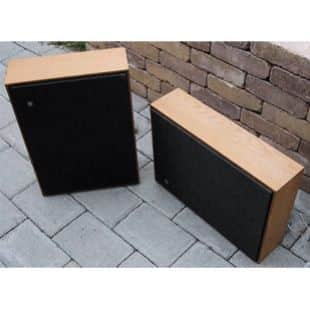
“B&O loudspeakers will meet very exacting conditions as their specifications exceed international hi-fi standards. All B&O speakers are of the pressure-chamber type with an impedance of 4 ohms. They are available in matched pairs only in a choice of teak or Brazilian rosewood finish”
Speaker units: Low-frequency unit and high-frequency unit. Crossover frequency: 5000Hz. Frequency response (DIN 45570): 60 – 18000 Hz. Power rating: 10W (RMS), 15W (Music). Volume: 8 litres
Dimensions: 300mm high, 420mm wide, 110mm deep